About this essay. I wrote this for an anonymous essay competition organized by the Foundational Questions Institute with the theme “How could science be different?” (it arrived third place!). But I also wrote it, from the very beginning, as a sort of manifesto for Plankton Valhalla. It’s all this website is about.
Halfway through the 19th century, Ignaz Semmelweis was obsessed with preventable deaths. A terrifying number of women were dying every month in his Viennese maternity clinic, as puerperal fever deprived babies of their mothers at rates of one or two women every twelve. At the time, it was common for physicians to examine patients and deliver babies shortly after performing autopsies. Semmelweis had noticed a pattern: having the doctor clean his hands after an autopsy seemed to help. By 1847 he was sure. Within a few months of introducing the use of chlorinated lime to cleanse all physicians’ hands between operations, the death rate had dropped by a factor of ten. The Hungarian scientist rushed to publish his findings and recommended that all doctors follow that same practice.
If he expected to take the world of medicine by storm, be hailed as a savior of thousands of lives, the reaction of his peers was, to say the least, underwhelming. Most physicians ignored his appeals, and many were offended by them. The idea didn’t make sense. There are so many possible causes for childbed fever, they said, and expecting something as banal as washing one’s hands to eradicate them all at once was beyond ridiculous. Was he trying to push the blame on them? Semmelweis escalated his calls for hygiene reform to the point of hysteria. He accused his detractors of murder and gave in to alcoholism. Needless to say, this breakdown only worsened his position. He lost his post at the clinic and his career declined for years.
Then, one day, a colleague invited him to a professional visit to “one of my new institutes”. That was a lie. The institute turned out to be a mental asylum and Semmelweis’ end. Guards badly beat him when he tried to leave. Perhaps due to those injuries, he died from an infection two weeks later.
How could that happen? We know today that Semmelweis was right in his insistence for hand hygiene in the hospital. Even children know that. Yet, to most of his contemporaries, it felt wrong. Cognitive dissonance might have played its part, but even excluding that particular bias, the Hungarian’s claims begged for a suspension of disbelief.
What Semmelweis failed to do was provide a convincing explanation of why hand washing is important. That explanation only became clear in the years following his death, when Louis Pasteur, Robert Koch and others used their microscopes to observe bacteria, study their behavior, and discover clear links between the microorganisms and the spread of diseases. The scientific community eventually—and not without resistance—accepted their evidence as truth, and the rest is history. The “germ theory of disease” is now considered one of the greatest triumphs of modern medicine, likely the salvation of millions of lives.
Beyond the fantastic advancements in treatment and prevention that it brought forth, there is one key lesson hidden in this tumultuous success story. Today we—not only trained doctors, but the public at large—take the idea of bacteria-induced maladies for granted. It feels right. I think it is safe to say that every human being with a little education has an intuitive grasp of the way these tiny organisms are distributed right about everywhere, of how they have many ways to enter one’s body, and that in many cases this is a bad thing.
This is a kind of miracle. The “germ” has entered our cultural pantheon of granted truths, and it alters, every day, the behaviors of billions of people. By virtue of being wonderfully simple and “sticky”, an idea that had taken decades to be confirmed scientifically is now serving humanity well beyond the walls of hospitals and clinics. The same recommendation that Semmelweis had failed to spread in his lifetime has taken wings of its own soon afterwards, all thanks to a simple reformulation.
This begs the question: does this kind of beneficial spillover into culture happen all the time in science? I want to argue that the answer is “not nearly enough”.
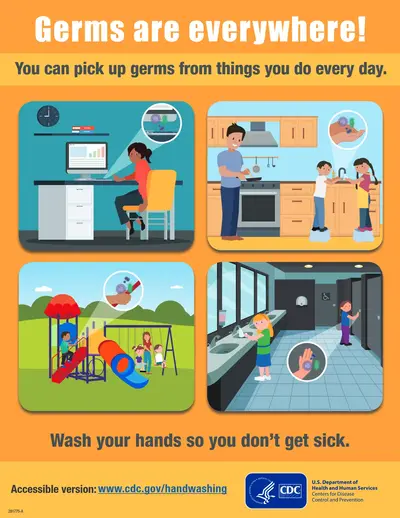
Ask twenty people what science is, and you’ll get twenty answers. Some will call it the pursuit of knowledge about the Universe, others will say it is a vocation, a passion, or just another career choice alongside gardening and law. Many of these definitions are “true enough” for the needs of the individuals who use them. But this lack of generality is damning.
Doubts bubble up. Science may be a passion for many, but what makes it so? What is “truth” for its own sake worth? Is science only for full-time scientists? Is its contribution to society only to save lives? Francis Bacon, in his Novum Organum, claimed that science is “the endowment of human life with new inventions and riches”. Disciplines like astronomy and quantum gravity may bring us riches at some point in the future, but it’s difficult to argue that this is the main reason why their scholars get up in the morning.
We can try a different angle. According to Merriam-Webster’s Dictionary, technology is “the practical application of knowledge especially in a particular area”. What, then, is science a technology for? What deeply human need did we design science to fulfill?
The reflexive answer, “to solve problems”, is a near miss. While that’s what we struggle with daily, experience should make it clear that we don’t need to, nor can we hope to, solve most problems: we just want to make them bearable. A better answer to that last question, then, is that science is humanity’s mistake minimizer. If you want to drive a nail into the wall, you use a hammer; if it’s a mountain you’re climbing, you use mountaineering gear; and if you want to generally make the minimal amount of mistakes in something, you use the scientific method.
Perhaps surprisingly, this definition seems to work in practice. Philosophers have realized long ago that science can’t be about something as simple as “getting things right”. The world is too messy, our senses too imperfect, and our minds too feeble to aim so high. Humbly settling for being “less wrong than before” is a more achievable aspiration.
The key assumption, the brilliant insight of the founders of modern science, is that we are always wrong at first. In everything, we begin from a state of maximal mistakes, and our task in doing science is to reach the lowest amount of mistakes possible through a certain process of observation and theory-testing. A lot of our mistakes consist in our inability to understand and predict what happens around us, so we use science to make models and causal explanations. Everything else is downhill of this definition: all of the passions and specializations, all of the life-saving and riches-endowing.
Even the weaknesses of science stem from its role as “just” a tool for the gradual elimination of errors, because the tool itself can be misapplied. We often see, among other things, biases in the focus of research and in its participation, political and commercial influences, and the dangerous tendency to be misunderstood as a quest for the truth. The scientific world is not a mistake-free culture, even though it strives the hardest to become one.
Still, the implications of seeing science as our tool to reduce errors are vast. First, it means that there is no such thing as “alternative science”. The scientific method is explicitly designed to incorporate all the ways to shrink the mistakes we make. Any endeavor external to science, however flashy and inspiring and anecdotally good, will—by definition—either fail to consistently reduce mistakes or be eventually refined and incorporated into science.
Second, this framing tells us that science transcends the level of most other areas of knowledge. Sure, salespeople, plumbers, and (even) lawyers are essential and entirely respectable professionals on their own terms. But they, too, must wish to make fewer errors! The scientific approach works better in certain domains than others—compare, say, ocean-floor exploration to poetry—but in principle it is mutually-exclusive with none.
Third, and more to the point, is the realization that it would be unkind to deprive anyone of this wonderful technology for the mind. If mistakes are everywhere, then we must not limit the use of the mistake minimizer to the specialists and the hobbyists. Doing so would be like putting great effort in building the fastest, biggest cargo trains and none in developing cars for the masses to get around with. Yet it looks like that’s exactly what we are doing. A brief survey of the world of scientific information paints the picture of a walled garden—or myriad walled gardens connected barely to each other and scarcely with the rest of the world.
Every week, the scientific community produces an immense torrent of new insights on all aspects and layers of reality. The way things work now, there are three major ways in which the human population benefits from this veritable cornucopia of information: progress, education and, for lack of a better term, entertainment.
Progress is the evident gift from science to humanity. Over the past centuries, scientists have directly and indirectly “endowed” the world with “inventions and riches” far beyond anything that Bacon might have dreamt of. While there is debate on the possible destructive outcomes of future progress, let it suffice to agree that we do want some level of progress to continue.
This Baconian progress, however, is a top-down affair. The fruits are gifted or sold to the people, but the people don’t have access to the fruit orchards. Scientific research itself is impenetrable to the general population. Academics are absorbed in their chase for explanations—or, better, mistakes to remove—ever more sophisticated, complex, and minute. In doing so, they are forced to invent jargon and whole languages that capture the necessary nuances of the field, thus making their words opaque for all others. The moat gets deeper and deeper, giving rise to two distinct classes of people for each field: the givers and the receivers.
We might hope for education, the second category of science output, to come to the rescue. Schooling is well-positioned to unlock the doors to the gardens of science and, at least in theory, that’s exactly what it strives to do. Unfortunately, it doesn’t work—not in general, and with all the caveats that such a sweeping statement needs. The focus of basic science education around the world seems to be knowledge-stacking rather than thought-enhancing. Kids learn about the scientific method like they learn about South Africa’s main export resources in geography class. To a child, science looks like a quasi-random collection of facts, just like all other subjects. It’s kept on the same level and mutually-exclusive in scope. This might be enough if the only purpose of science curricula were to select future professionals. But it is not enough if the goal is to equip everyone with as big a mistake-minimizing toolbox as possible.
Of all the science data points that children learn over their first two decades of life, only a tiny fraction will eventually prove useful in those who pursue STEM careers. Almost none of it ever serves a purpose for the non-STEM people—which, in a scientific-workhorse country like the United States, account for more than three fourths of the population. Pick a schooled adult at random and, more likely than not, they will not know or remember what, say, “critical thinking” even is, let alone being able to do it. At their best, schools try to make kids say “I like science”, but they fail to instill a more fundamental notion: “I need science like I need shoes”.
We come to the third channel of mass-dissemination of science, in which I group all of the non-school, non-academia sources of scientific thought. These include science outreach programs, science news outlets, and popular science in general. They are the closest we get to the timely democratization of mistake minimizing. Natural science museums are open and legible to everyone. Pop-science paperbacks bring the latest developments of neuroscience and biochemistry to the artist’s bedside table. YouTubers deliver crystal-clear animated explanations. As a science-lover, I benefit daily from this fantastic flowering of expository generosity. Too bad that a short reach and perverse incentives put severe limits on this industry’s influence.
According to NPD BookScan, the whole science nonfiction genre accounted for a measly 2.5% of sales out of the top 25 bestselling books, all through a single entry in the 13th place. Even when comparing only with nonfiction books, the number of popular science entries is dwarfed by that of the self-help genre (see, for example, this list of the highest-selling nonfiction books of all time). The situation isn’t much better in more “modern” media, such as online videos. According to Wikipedia, out of the fifty most-subscribed YouTube channels, none are what we could define as “popular science” channels. The most-followed science-related channels in English, like Kurzgesagt, Veritasium, and TED Ed, each sport 20 million followers or less. While that is a very large number—and great news in absolute terms—it’s still less than half that of the 50th most-subscribed channel, a Russian-language entertainment outlet from Belarus.
The reason for this marginalization of science exposition is not a problem of quality—most of these sources are very high-quality—but of the battlefield they must compete on: the entertainment market. In an ad-based, high-noise industry, “survival of the loudest and flashiest” is the reigning law. Pop-science media need to play by those rules, and are forced to shift all the emphasis toward the “sense of wonder” inherent in scientific understanding or, when that is not enough, to sensationalism. Eye-catching titles are the norm, and it’s not rare to see books advertised with grandiose blurbs on their covers like “A firework display of popular science” or “Genius… has you gasping in amazement”. Is an adrenaline rush the biggest promise of science?
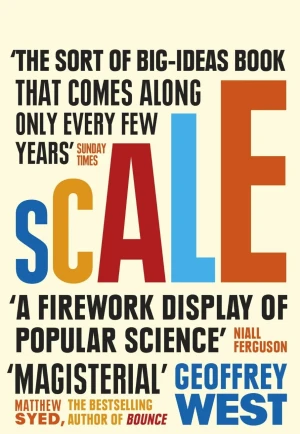
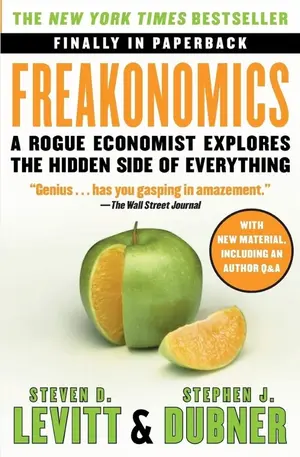
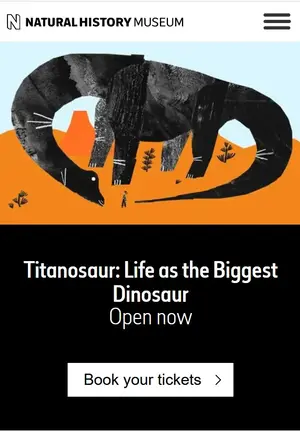
The end result is that all the expository efforts are focused on the newest, most awe-inspiring, most spectacular bits of science. Better than nothing, perhaps, but far from a thorough dissemination of the mistake-minimizing tech. More worrying still, this niche market is mostly a “preaching to the choir” affair, aimed at people who already have good scientific foundations and those who profess to have a passion for science: precisely those who gain the least from it.
We are left with a huge gap. Scientists routinely hone and master a vast array of “instruments for the mind” but few of those are reusable by others. What we need is a liberalization of this thought technology, and I believe there is reason for hope. All the ingredients we need are ready: we just need to begin using them a bit differently.
There is a kernel of science-based intuition or wisdom that is shared by almost everyone with minimal education. As I mentioned above, a prime example is the germ theory from the late 19th century. In Semmelweis’s time, the unscientific idea of a “miasma”—bad air causing illness—was an insurmountable obstacle for his hand-washing recommendations. Nowadays most people learn about bacteria and hygiene as common sense, directly from our parents. A few examples exist in other domains too. It is now common knowledge that the universe is unfathomably wide, and that we’re not at the center of it; that we are animals ourselves, and have much in common with all other life forms; and that seemingly small personal choices, like the use of home appliances, can collectively affect the global climate in negative ways.
While rudimentary, these insights are broadly correct. They serve as anchors that keep us from slipping towards some easy mistakes. Lack of science-backed intuitions leads to more magical thinking, superstition, and biased discrimination, even in the presence of high practical skills and intellect. While they are not always enough, at least they put bounds on the magnitude of our errors.
Even as most classroom-acquired knowledge soon disappears into oblivion like sand castles on a beach, a few scientific insights like these manage to remain with us, like rocks unmoved by the waves. Funnily enough, we don’t know exactly why they remain. Here is, then, a “mistake” ripe for our minimization efforts: we don’t know how to manufacture this kind of sticky life-long scientific intuitions. How do we turn basic science into something that can be handled by literally everyone? How do we package good ideas so that people can start taking them for granted? Achieve that, and we’re one step closer to coming together as a wise civilization.
Science communication researchers and practitioners are making some progress. There is increasing attention to the evidence-based communication of science, and more institutions are now required to include outreach as one of the pillars of publicly-funded research plans. But short of completely overhauling the education system—a tempting and infeasible dream—we can’t make everyone into science professors. Some people will “like” science more than others, and many will have no interest at all in such topics, not to mention such a career. That’s alright. Converting all people into fans or academics is not necessary nor (very) desirable. Any progress in the teaching and communication of advanced topics like population genetics, quantum entanglement, and evolutionary neuroscience should be encouraged and celebrated, but they can only ever hope to reach the minority of individuals already receptive to science. The bigger ambition is to provide everyone—regardless of personal interests—with a basic but broad “scientific survival kit” made of simple but powerful intuitions, evidence-based wisdom helpful in everyday life.
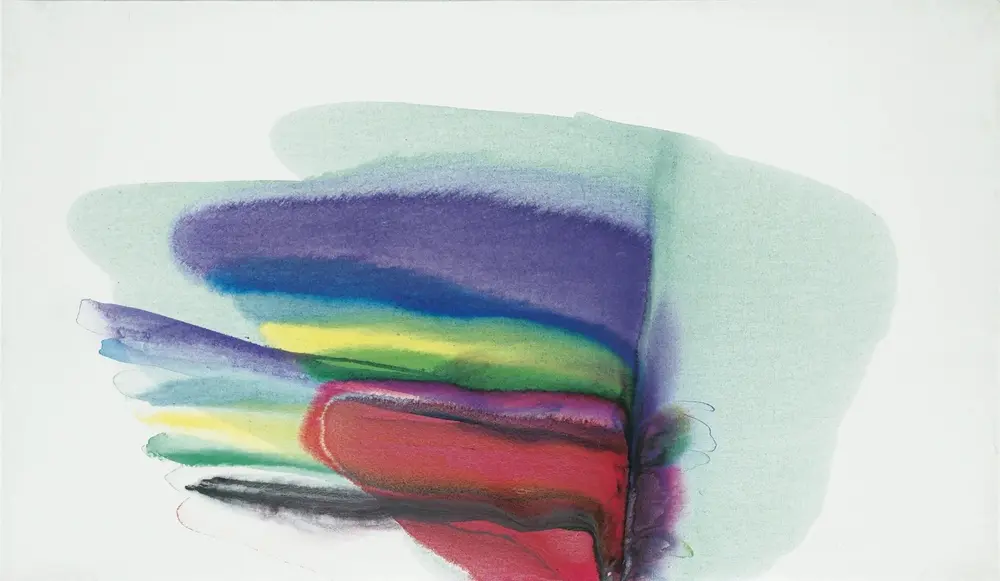
What if we could make a sticky “heuristic”—a rule of thumb—out of the idea that reality is a deeply interconnected network of interactions, with energy and information as currency? What if everyone could learn to “see” the feedback loops scaffolding our lives as easily as we already “see” the possible germ hotbeds in our surroundings? And wouldn’t it be a major milestone for humanity if the mathematical concept of “non-linearity” and “chaos”—and their slippery unpredictability—became accepted as an obvious and essential aspect of life? Such notions, basic as they are, would introduce some vital nuance in the way we experience our lives. We would recognize the more complex problems and avoid expecting to solve them with simple solutions. We would seek the “leverage points” in the systems we care about and distance ourselves from absolute statements that discount all uncertainty.
In a 2009 paper titled A beginner’s guide to forcing, the mathematician Timothy Y. Chow coined, in passing, the striking term “open exposition problems”. He first mentions the pre-existing concept of “open research problem”, i.e. a well-defined technical question for which no one has managed to find a satisfactory answer yet. Then he adds:
I propose the less familiar concept of an open exposition problem. Solving an open exposition problem means explaining a mathematical subject in a way that renders it totally perspicuous. Every step should be motivated and clear; ideally, students should feel that they could have arrived at the results themselves.”
While Chow’s proposal was directed at mathematicians, his idea is a powerful framing applicable to all STEM disciplines and to all audiences. Open exposition problems exist at all rungs of the “understanding ladder” of knowledge. The lowest ones, however, are particularly important because they are often only barely out of reach for most people. How wonderful would it be if whole labs and departments were dedicated to lowering those rungs, putting important-but-obscure foundational ideas into universally-accessible terms? I’m writing this essay because I believe that we have much to gain by solving more open exposition problems.
A valiant undertaking of this kind was Donella Meadows’ Thinking in Systems, a Primer, in which she turned the difficult study of complex connections and non-linear dependencies in social, ecological, and biological systems into a highly-legible and memorable set of heuristics. More recently, Daniel Kahneman drove home the ubiquity of cognitive biases in all of us, elucidating his group’s research in Thinking, Fast and Slow, a very accessible book. Nassim Nicholas Taleb’s several best-sellers manage to lead—“shock” might be a more appropriate verb—most readers into an intuitive grasp of the threats and opportunities of random phenomena. And a subset of the “science internet creators” are now exploring non-textual ways to aid the instinctive understanding of science, from the animated explanations of YouTubers like Grant Sanderson (3Blue1Brown) and Steve Mould to the interactive blog posts of Kevin Simler, Bartosz Ciechanowski and Nicky Case.
These are only some of my favorite examples of the winning approach: to various degrees, they avoid technical lingo and are written in a frank and unassuming tone. Most important, they shine light on core scientific notions of immediate impact for anyone, rather than tantalizing advances in half-understood frontiers. In other words, they provide useful and user-friendly lenses to see the world, not final answers or roller-coaster rides.
There are many great open exposition problems waiting for us almost unchallenged. To name a few: the real meaning of the word “information”; the disentanglement of causation from correlation and of goal-oriented explanations from the purely causal ones; the preponderance of our blind spots in virtually everything we do; and, to indulge in a previous point of mine, perhaps the role of science not as a “discipline among others” but as a universal open-source toolset available for the good of each and every one of us. Many more examples exist, and we need capable people to study them methodically and spot more opportunities of this kind.
We already have what’s needed to tackle these problems. The experts, the educators, and the storytellers can unlock new synergies by joining forces. It’s true that schools tend to forget the value of quality over volume of knowledge, but they can and do sometimes remember it. By repositioning some—not all—parts of the science curricula as “life lessons” instead of lists of facts, educators could leverage their capillary reach for a deep social transformation. Most science communicators may be too busy amazing their audiences, but they have the skills to engage with their followers and turn the important messages into viral memes. What if governments enlisted them to complement the institutional efforts? Lastly, the academic publication system pressures researchers into chasing breakthroughs and publishing jargon-rich papers, but many scientists are ready to go out of their way to distill the necessary translations. Even a little shift in incentives could turn the tide in favor of a fairer dissemination of useful insights.
Mass-distribution of tools always has some downsides. Ball-point pens can be used to write lies, kitchen knives can kill, and simplified heuristics will give you wrong answers when misapplied. Some scientists dislike what they call the “dumbing down” of sophisticated scientific theories, and they have a point. For example, believing too naïvely in germs may lead to undue fear of dirt, too much hygiene, and over-reliance on antibiotics. This, in turn, can increase the likelihood of allergies, skin conditions, weaker immune systems, and the emergence of superbugs. Indeed, even the “viral” intuition of the germ theory, which helped save millions, was an obstacle when the time came to research the “deficiency diseases” (illnesses not caused by germs).
Or look at the (rare) critiques of Meadows’ Thinking in Systems book. Some have said that it misleads its readers into believing they have become “system thinkers”, while the only way to really achieve that is to study how a real system works “in immense depth”. Others have condemned it for oscillating between a “naive realism” and a “muddled constructivism”, failing to clarify subtler links. While some of these comments might come off as stingy “pearls before swine” statements when taken out of context, they are valid arguments: a simple framework of “systems”, “stocks” and “flows” must not be taken to be the whole story, and more nuance is needed to apply them in complex situations.
Just as a pen’s usefulness usually surpasses the dangers of its misuse, I believe that these are mostly acceptable risks. Science-backed intuitions are nothing more than tools, and learning when and how a tool can be used effectively is part of its user’s job. A rudimentary, naïve scientific intuition is better than no intuition at all, and much better than an unfounded intuition received from superstition or manipulation. Once in place, a mistake minimizer serves as a stepping stone for further refinement.
In Bacon’s time, perhaps, a caste of noble philosophers bestowing new inventions and riches upon the masses was all that science could hope for. The majority of the population received no schooling, and the idea of sharing science with all must have sounded like a delusion. In the centuries since, the world has changed. In Semmelweis’ and Pasteur’s time, many lay people were ready to grasp the key scientific discoveries, given the right format. And today—despite dire inequalities lingering in some parts of the world—almost 90% of all adults can read and literacy is spreading fast. We are lucky to have extensive infrastructure to deliver the insights; we have thousands of talented scientists and communicators eager to share the goodness with whoever is willing to listen; and we have a rich list of open exposition problems waiting for our collective brainpower.
To leverage these strengths, we need to overcome the so-called “deficit model” of science communication, where the public is faulted with an ignorance that must be cured from above. Instead, let us move on to a quest for inclusivity: make our best mental tools practical enough for whomever might wish to use them. Can we put our forces together in a way that benefits humanity in an equitable, empowering way? There is no reason why science, our one and only Swiss Army knife of mistake-removal, should not be in the pockets of every single person on Earth. ■
📬 Subscribe to the Plankton Valhalla newsletter!
Notes
- Cover image: Phenomena Wind Branch, Paul Jenkins.
